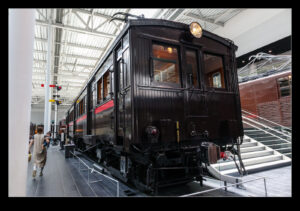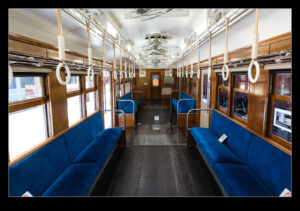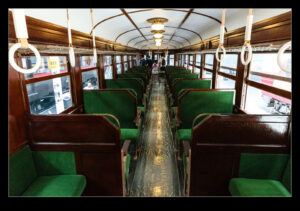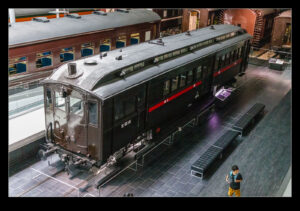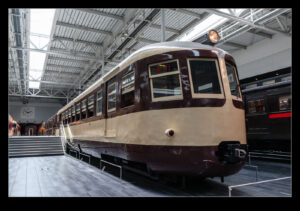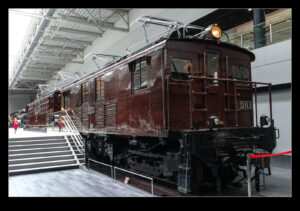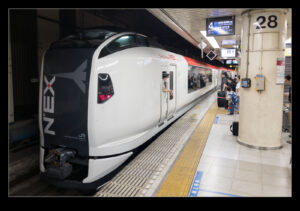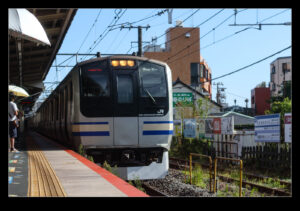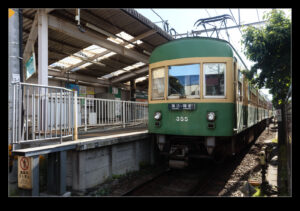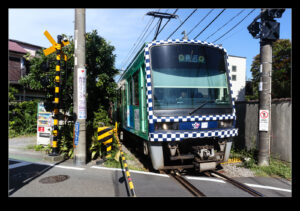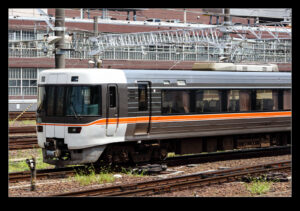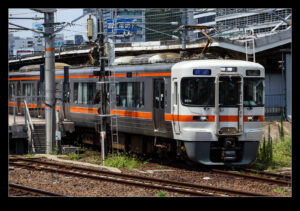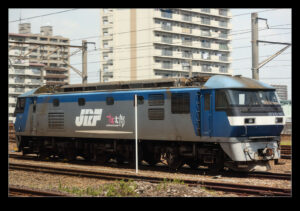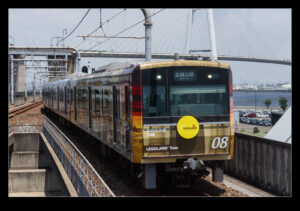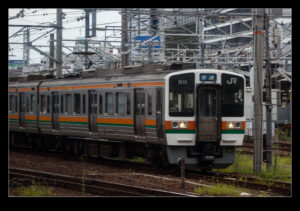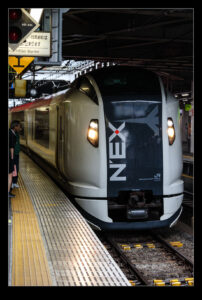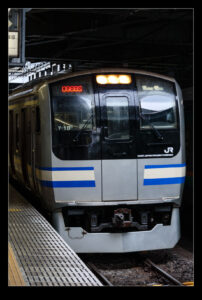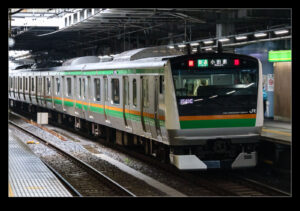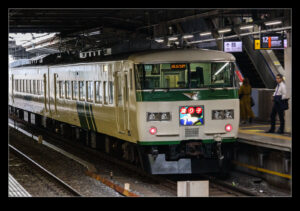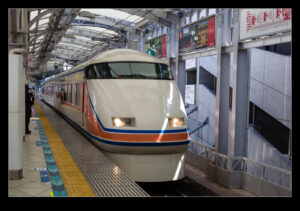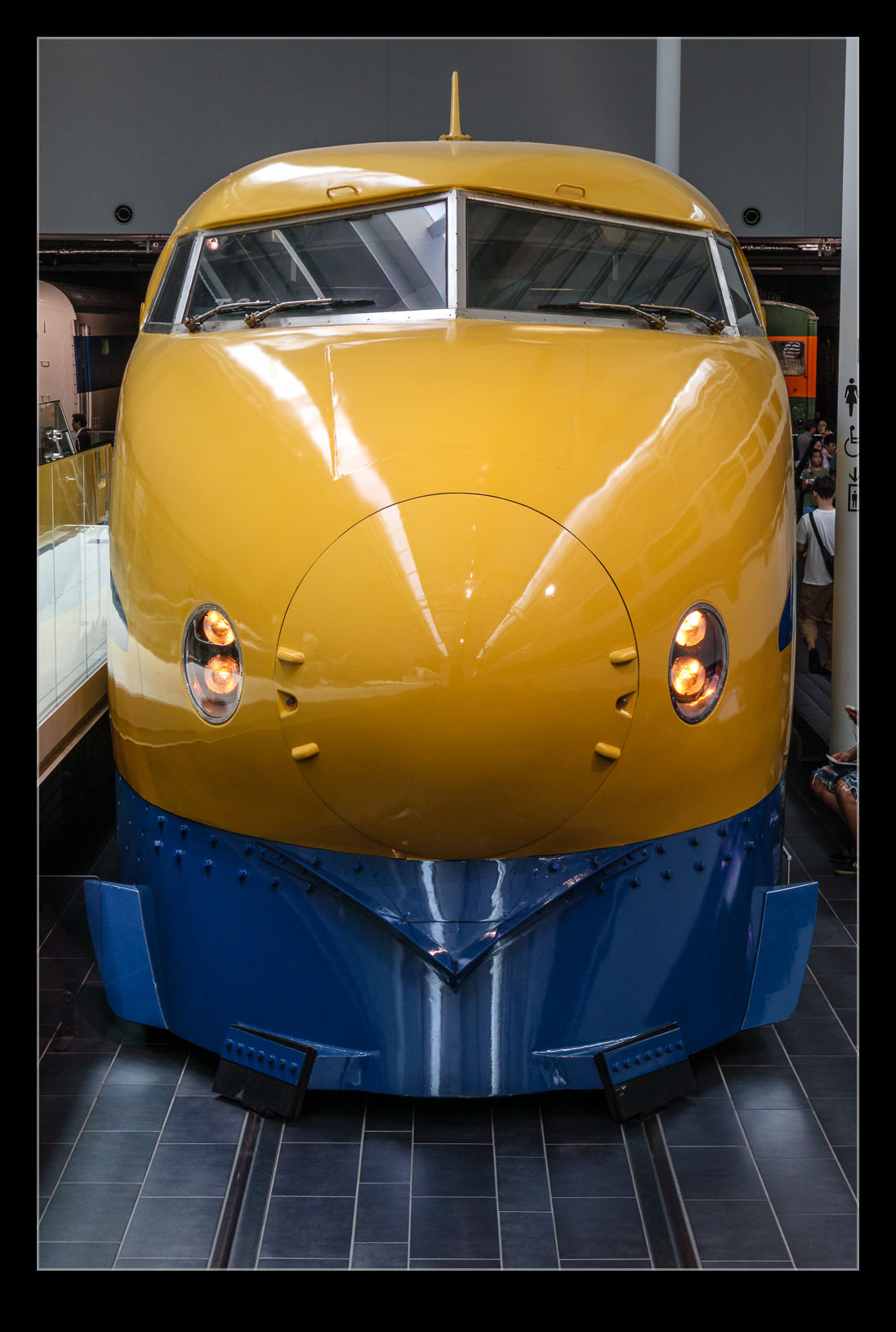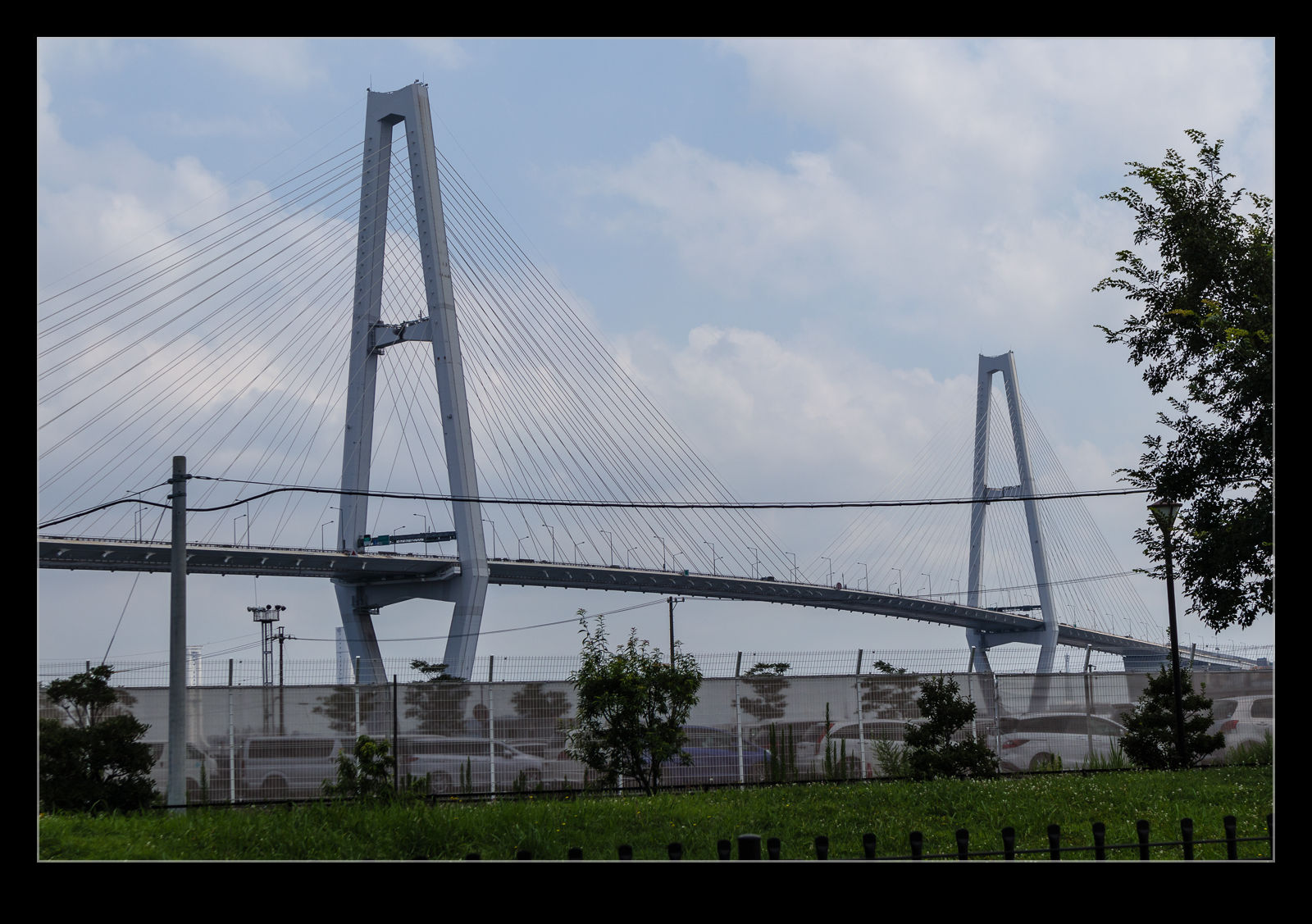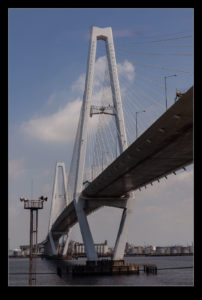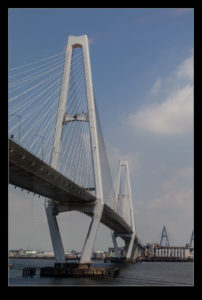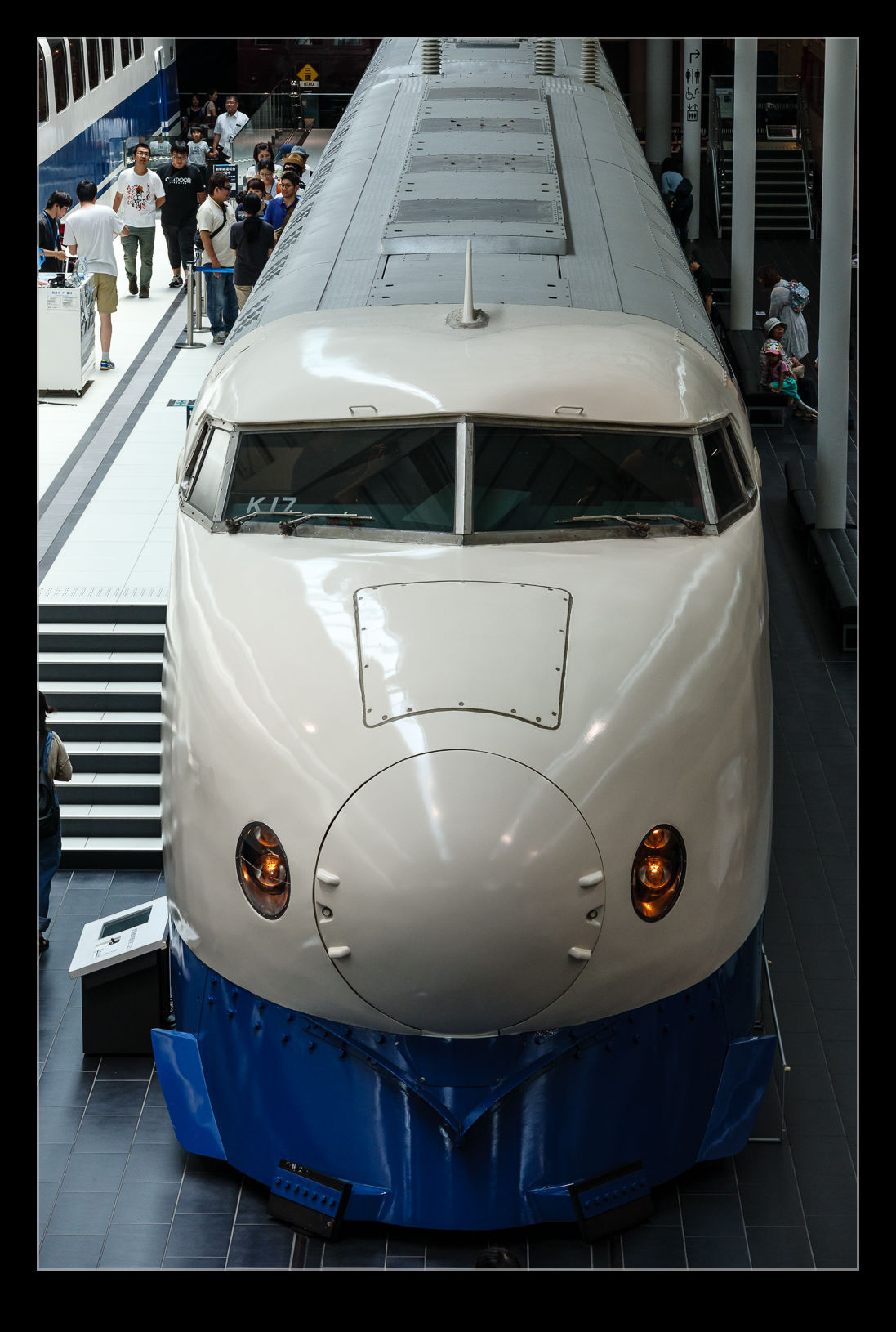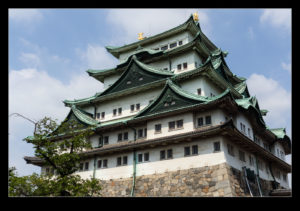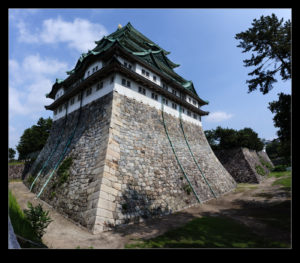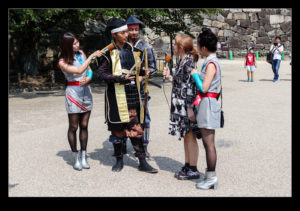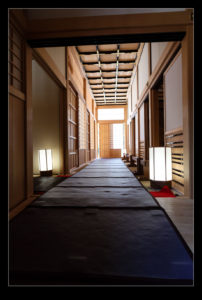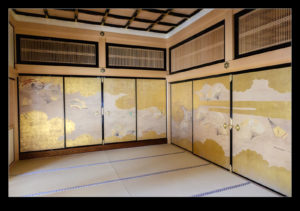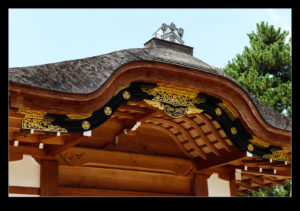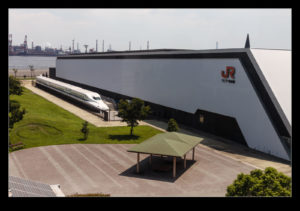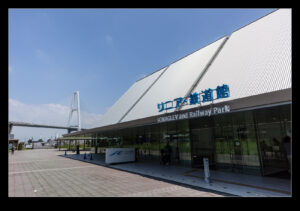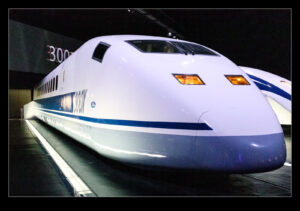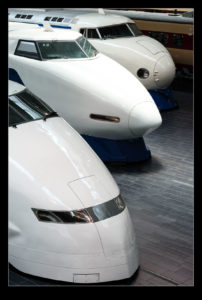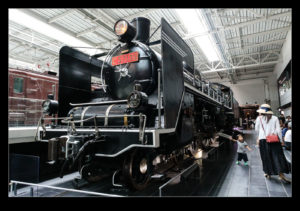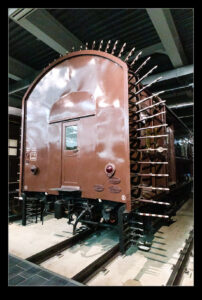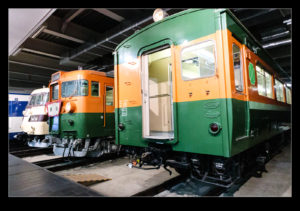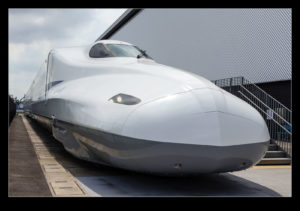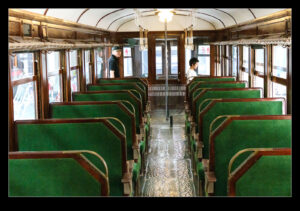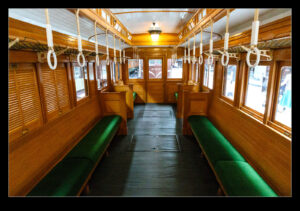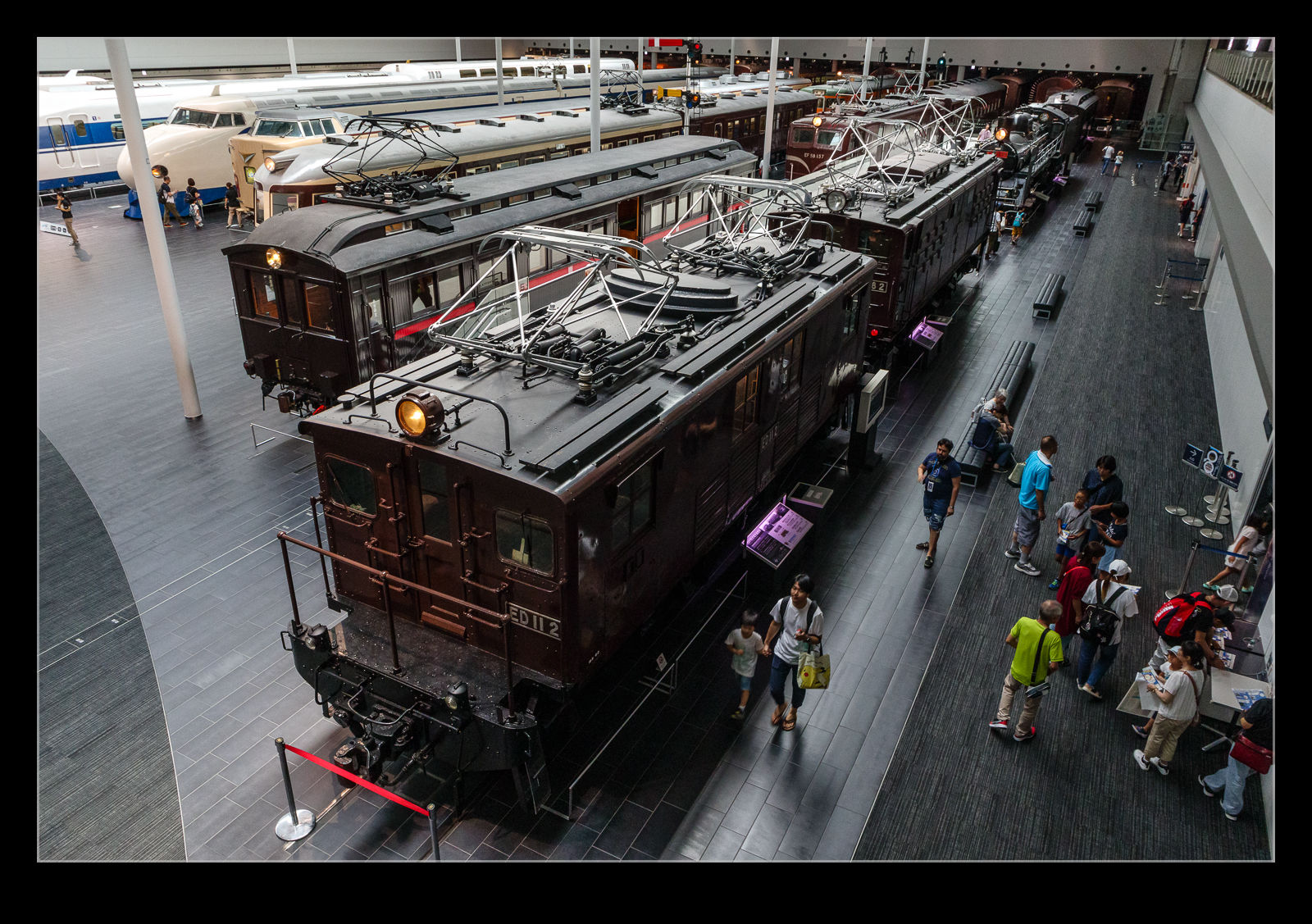 Here are some old Japanese rail vehicles. These are part of the SCMaglev museum in Nagoya that I visited when I was in Japan last summer. The museum has a great selection of Shinkansen equipment across the generations but it also has a lot of other rail vehicles from long ago. The vehicles clearly look old from the outside but the interiors are really an interesting comparison with what you see these days. The amount of wood in the paneling and the materials of the seating are definitely of their time. I was quite amused by the fans mounted on the ceiling. Obviously pre-air conditioning days with these cars and so a bit of air circulation was all you could hope for. Knowing how incredibly hot it gets in Japan during the summer, they would not have done much for the riders I would have thought. I wonder whether it was as crowded in those days as it is now. If it was even close, that would have been brutal.
Here are some old Japanese rail vehicles. These are part of the SCMaglev museum in Nagoya that I visited when I was in Japan last summer. The museum has a great selection of Shinkansen equipment across the generations but it also has a lot of other rail vehicles from long ago. The vehicles clearly look old from the outside but the interiors are really an interesting comparison with what you see these days. The amount of wood in the paneling and the materials of the seating are definitely of their time. I was quite amused by the fans mounted on the ceiling. Obviously pre-air conditioning days with these cars and so a bit of air circulation was all you could hope for. Knowing how incredibly hot it gets in Japan during the summer, they would not have done much for the riders I would have thought. I wonder whether it was as crowded in those days as it is now. If it was even close, that would have been brutal.
Tag Archives: Nagoya
An Update to the Japanese Rail Photos
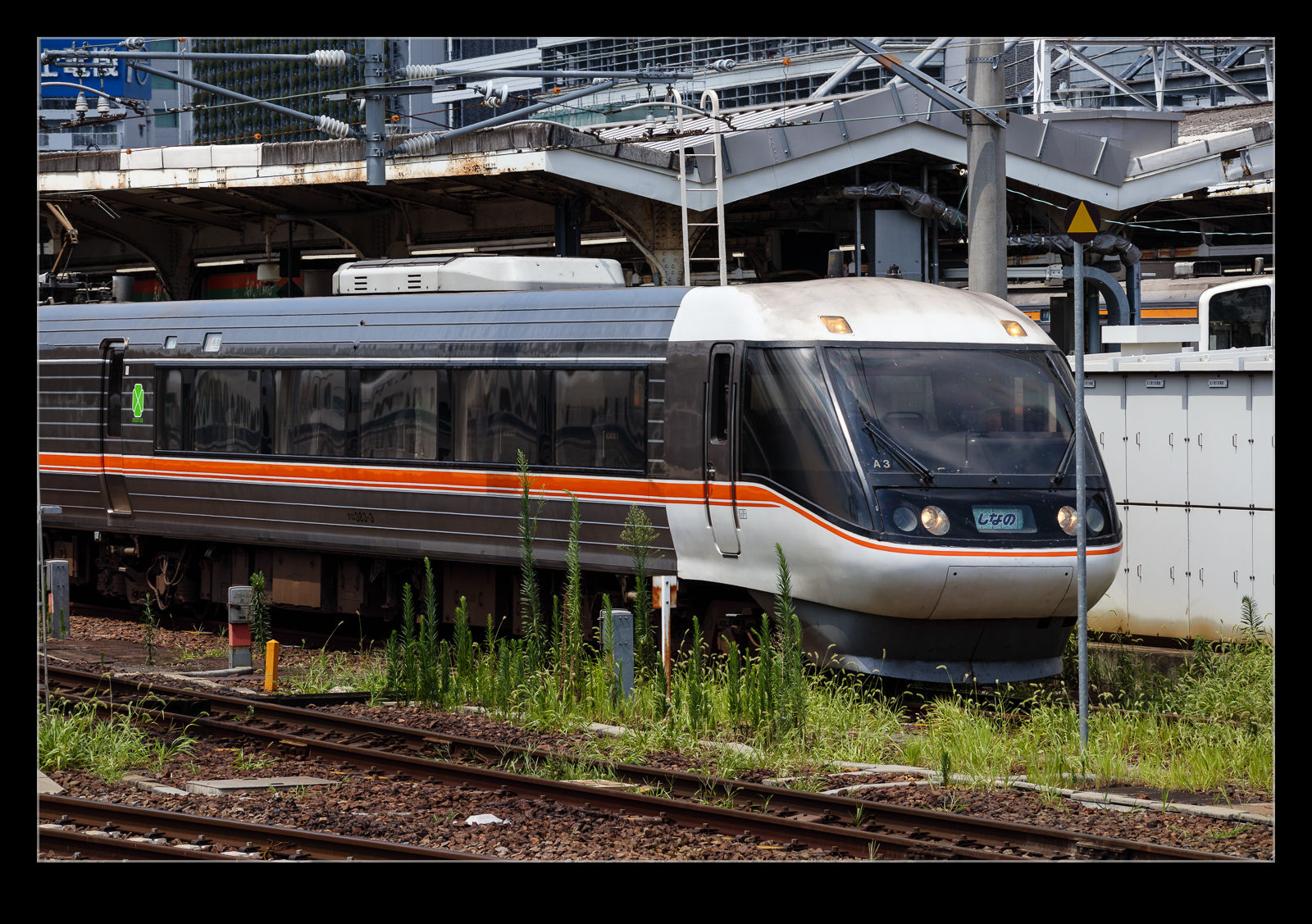 I have put some previous posts together of Japanese trains from my travels. This is an update to that (although a very late update given that these were taken nearly a year ago!). I got to see some different trains while I was in Nagoya for the day and then there is the variety of trains that you get around the Tokyo area. There was also a small line that ran through the Kamakura area which we crossed paths with as we were walking to the beach from the giant Buddha statue that I wrote about in this post. A few more photos to amuse those of you that like different trains.
I have put some previous posts together of Japanese trains from my travels. This is an update to that (although a very late update given that these were taken nearly a year ago!). I got to see some different trains while I was in Nagoya for the day and then there is the variety of trains that you get around the Tokyo area. There was also a small line that ran through the Kamakura area which we crossed paths with as we were walking to the beach from the giant Buddha statue that I wrote about in this post. A few more photos to amuse those of you that like different trains.
The Original Doctor Yellow
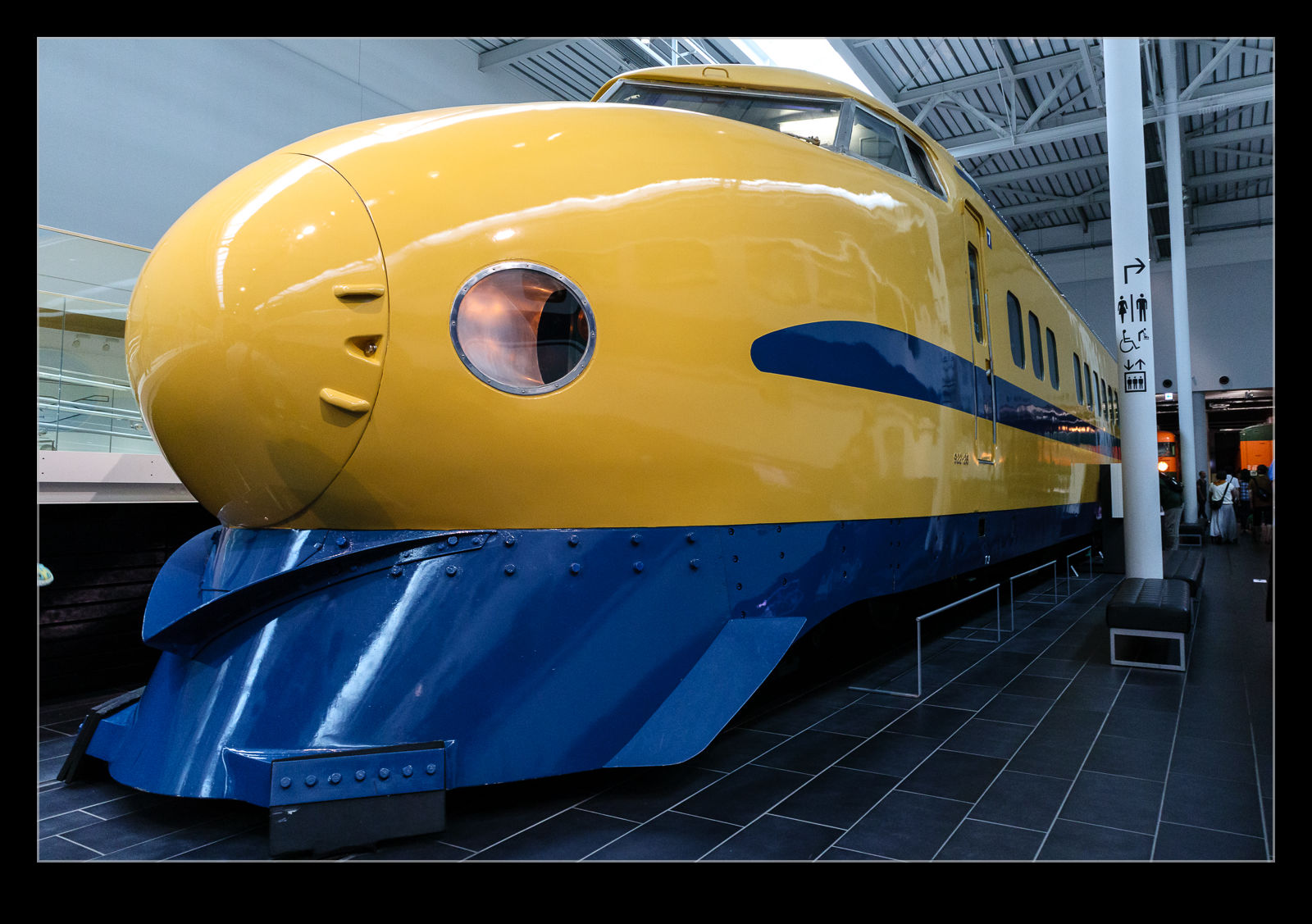 The Tokaido Shinkansen service requires regular inspection of the track to ensure it is up to the high standards required of high speed service. JRC operates an inspection train called Doctor Yellow. It is a highly instrumented version of the current trains. I have seen the current Doctor Yellow when I was at one of JRC’s maintenance facilities. However, the original Doctor Yellow was based on the Series 0 trains. It is now preserved in the SC Maglev museum in Nagoya along with many of the other Shinkansen designs.
The Tokaido Shinkansen service requires regular inspection of the track to ensure it is up to the high standards required of high speed service. JRC operates an inspection train called Doctor Yellow. It is a highly instrumented version of the current trains. I have seen the current Doctor Yellow when I was at one of JRC’s maintenance facilities. However, the original Doctor Yellow was based on the Series 0 trains. It is now preserved in the SC Maglev museum in Nagoya along with many of the other Shinkansen designs.
Nagoya Bridge
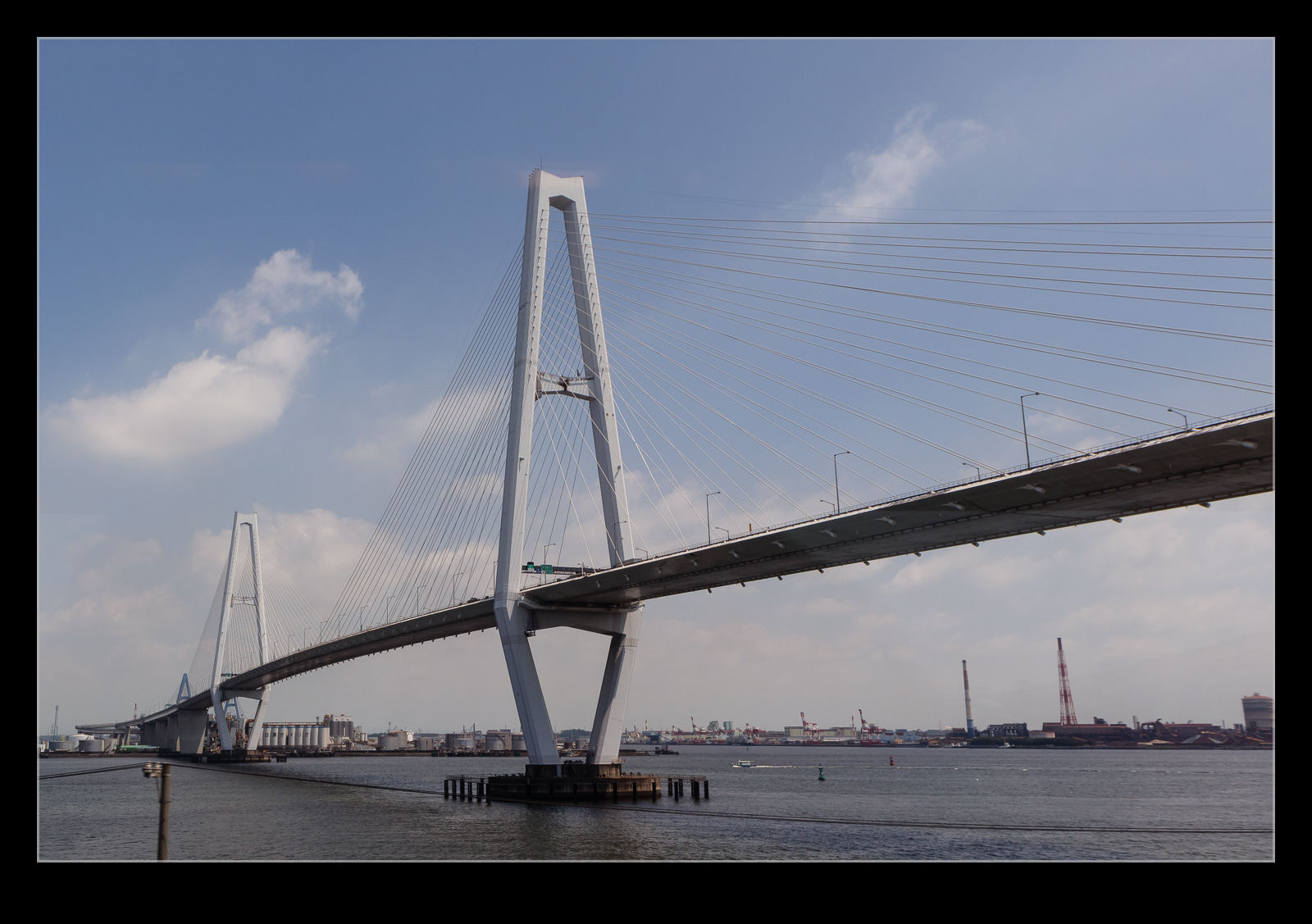 When I headed south out of the center of Nagoya to go to the museum, my route took me down to the docks area. A highway along the water obviously needed to clear the route for the larger ships so a pretty impressive bridge had been constructed. It is called the Meiko-Chuo Bridge. I could only get a good view of it from the train but it was in the background when you were at the museum. I thought it looked pretty spectacular.
When I headed south out of the center of Nagoya to go to the museum, my route took me down to the docks area. A highway along the water obviously needed to clear the route for the larger ships so a pretty impressive bridge had been constructed. It is called the Meiko-Chuo Bridge. I could only get a good view of it from the train but it was in the background when you were at the museum. I thought it looked pretty spectacular.
The Train That Started It All
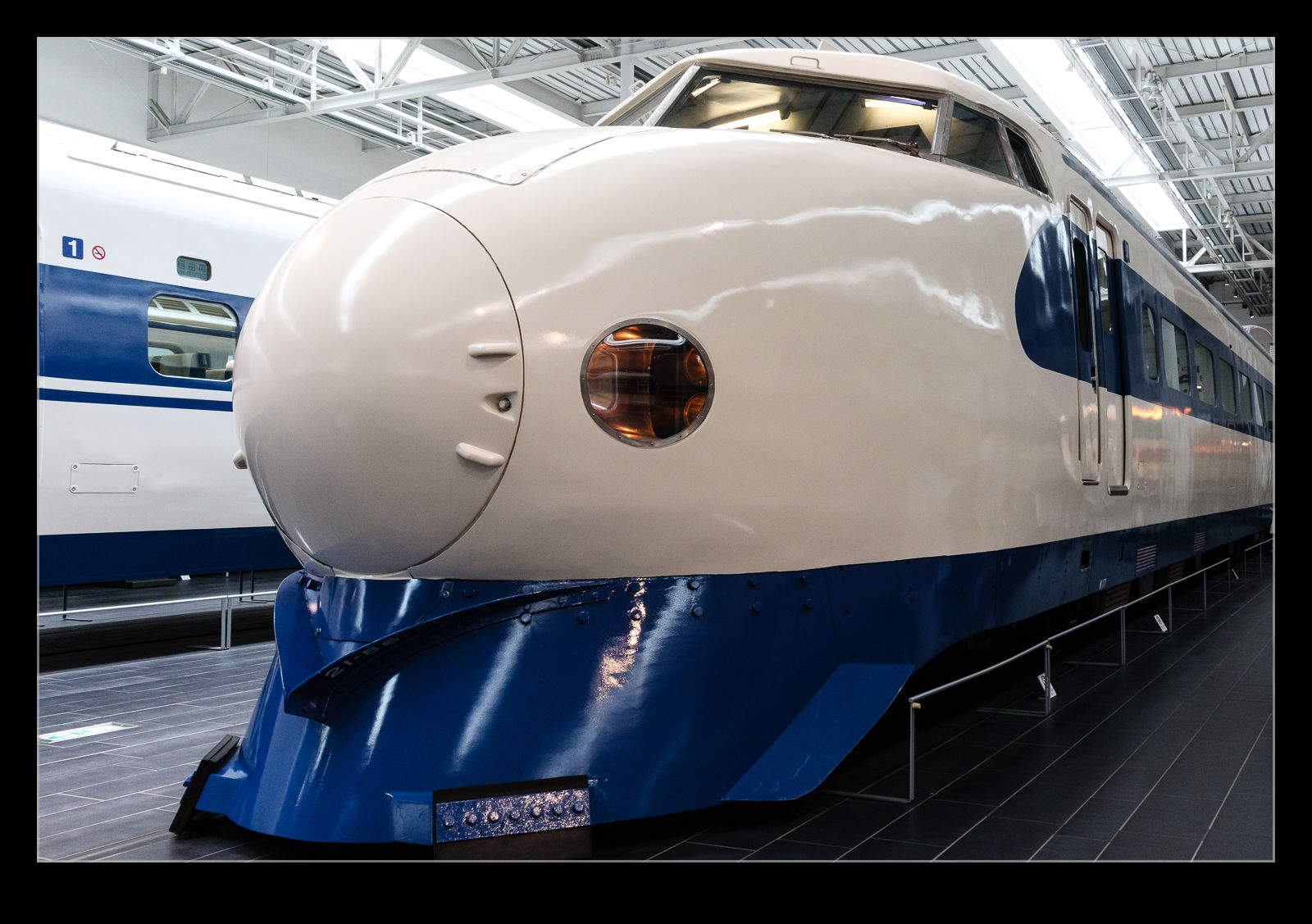 The Japanese Shinkansen trains introduced in the 1960s became known around the world as bullet trains. The shape of them was well known, often photographed with Mt Fuji in the background. While other countries developed high speed rail, the Japanese bullet train was often the first one people would associate with the topic. These first trains are known as the Series 0. There have been several iterations of design since. However, the Series 0 is still very recognizable to me and probably others of my generation.
The Japanese Shinkansen trains introduced in the 1960s became known around the world as bullet trains. The shape of them was well known, often photographed with Mt Fuji in the background. While other countries developed high speed rail, the Japanese bullet train was often the first one people would associate with the topic. These first trains are known as the Series 0. There have been several iterations of design since. However, the Series 0 is still very recognizable to me and probably others of my generation.
 I had seen a Series 0 vehicle once before. I visited the Nippon Sharyo factory is Toyokawa many years ago and they have a cab vehicle on display by the main gate. Sadly, I wasn’t able to get a photograph of that then. Seeing an example at the SC Maglev museum was my second opportunity. It was displayed alongside a number of the more recent iterations of the Shinkansen but, judging by the number of people taking photos of it, it still has a strong level of recognition.
I had seen a Series 0 vehicle once before. I visited the Nippon Sharyo factory is Toyokawa many years ago and they have a cab vehicle on display by the main gate. Sadly, I wasn’t able to get a photograph of that then. Seeing an example at the SC Maglev museum was my second opportunity. It was displayed alongside a number of the more recent iterations of the Shinkansen but, judging by the number of people taking photos of it, it still has a strong level of recognition.
Nagoya Castle
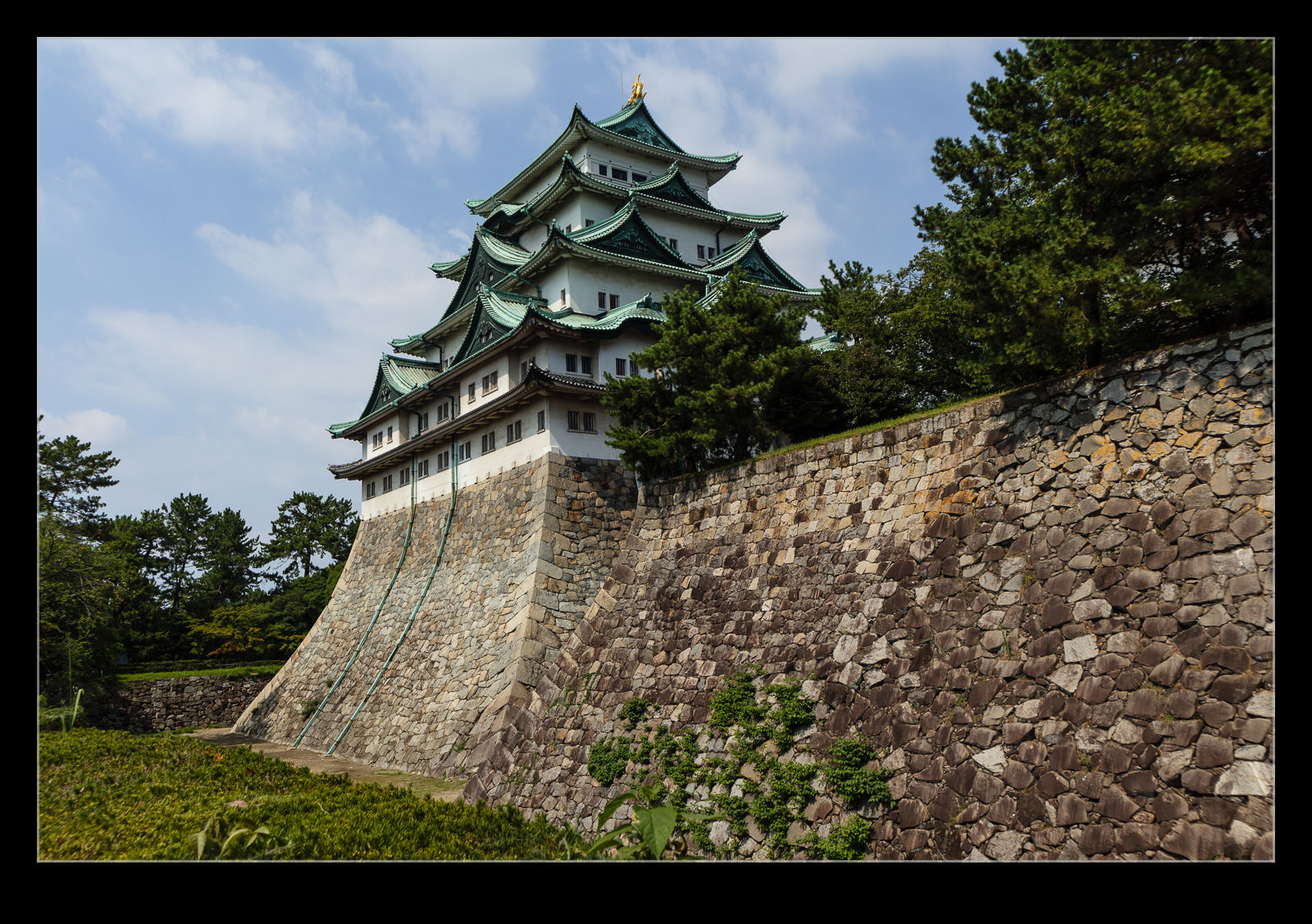 I had a free Sunday in Japan prior to some meetings getting underway so made the trip to Nagoya. Nagoya is a fair distance from Tokyo but the Nozomi Shinkansen service compresses that journey to just over 90 minutes! I took the subway to the location of the castle and wandered around the grounds. It was unbelievably hot. In the shade it was uncomfortable but when you got into the sun it was brutal. Still, how often am I going to get a chance so off I went.
I had a free Sunday in Japan prior to some meetings getting underway so made the trip to Nagoya. Nagoya is a fair distance from Tokyo but the Nozomi Shinkansen service compresses that journey to just over 90 minutes! I took the subway to the location of the castle and wandered around the grounds. It was unbelievably hot. In the shade it was uncomfortable but when you got into the sun it was brutal. Still, how often am I going to get a chance so off I went.
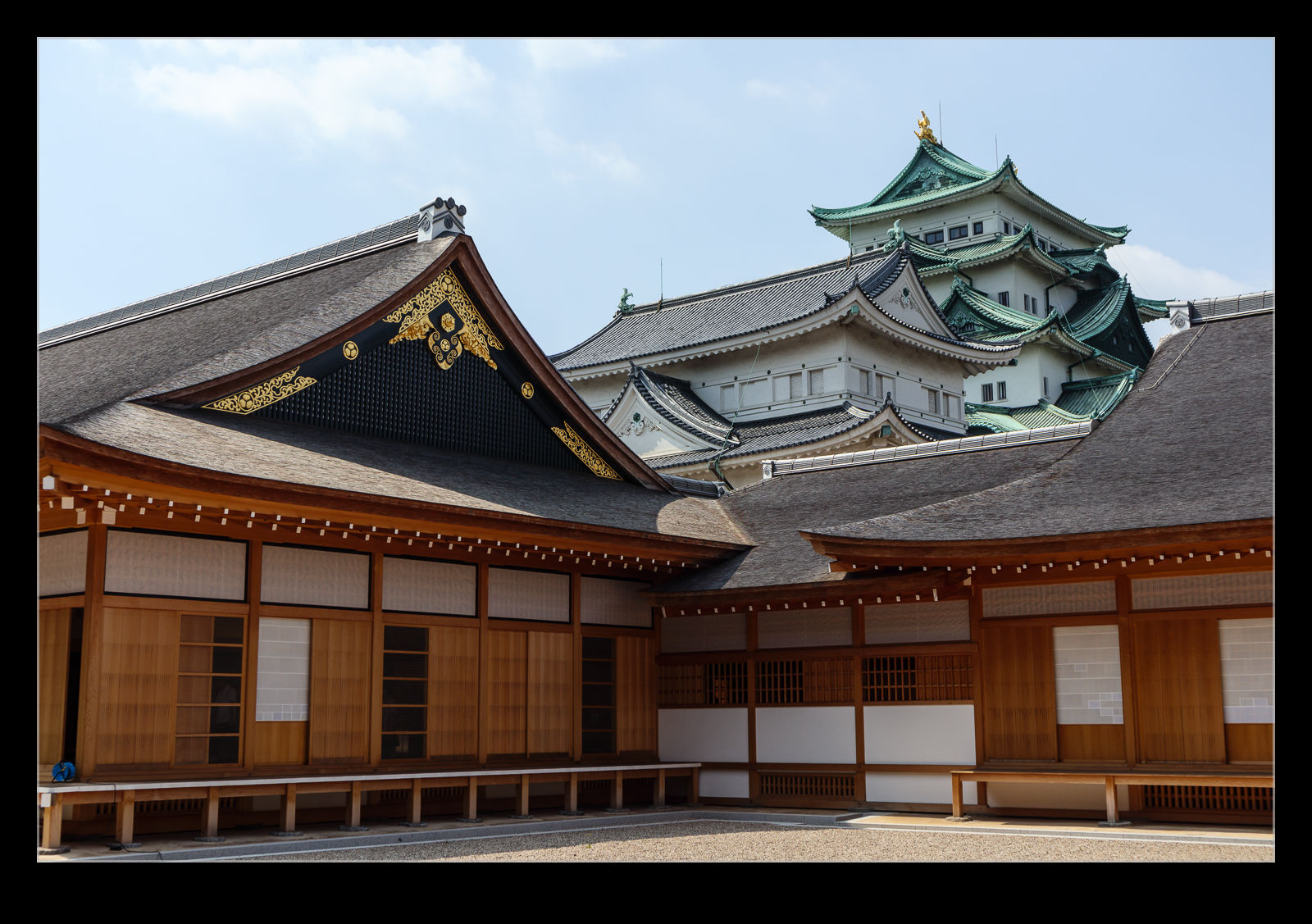 The castle is surrounded by a moat and some very thick walls. Lots of the structures were destroyed by fire in the bombing at the end of World War II. The tower was reconstructed in concrete after the war but has now been closed and they are planning to demolish it and reconstruct it in wood like the original. Other buildings have already been reconstructed in their original materials.
The castle is surrounded by a moat and some very thick walls. Lots of the structures were destroyed by fire in the bombing at the end of World War II. The tower was reconstructed in concrete after the war but has now been closed and they are planning to demolish it and reconstruct it in wood like the original. Other buildings have already been reconstructed in their original materials.
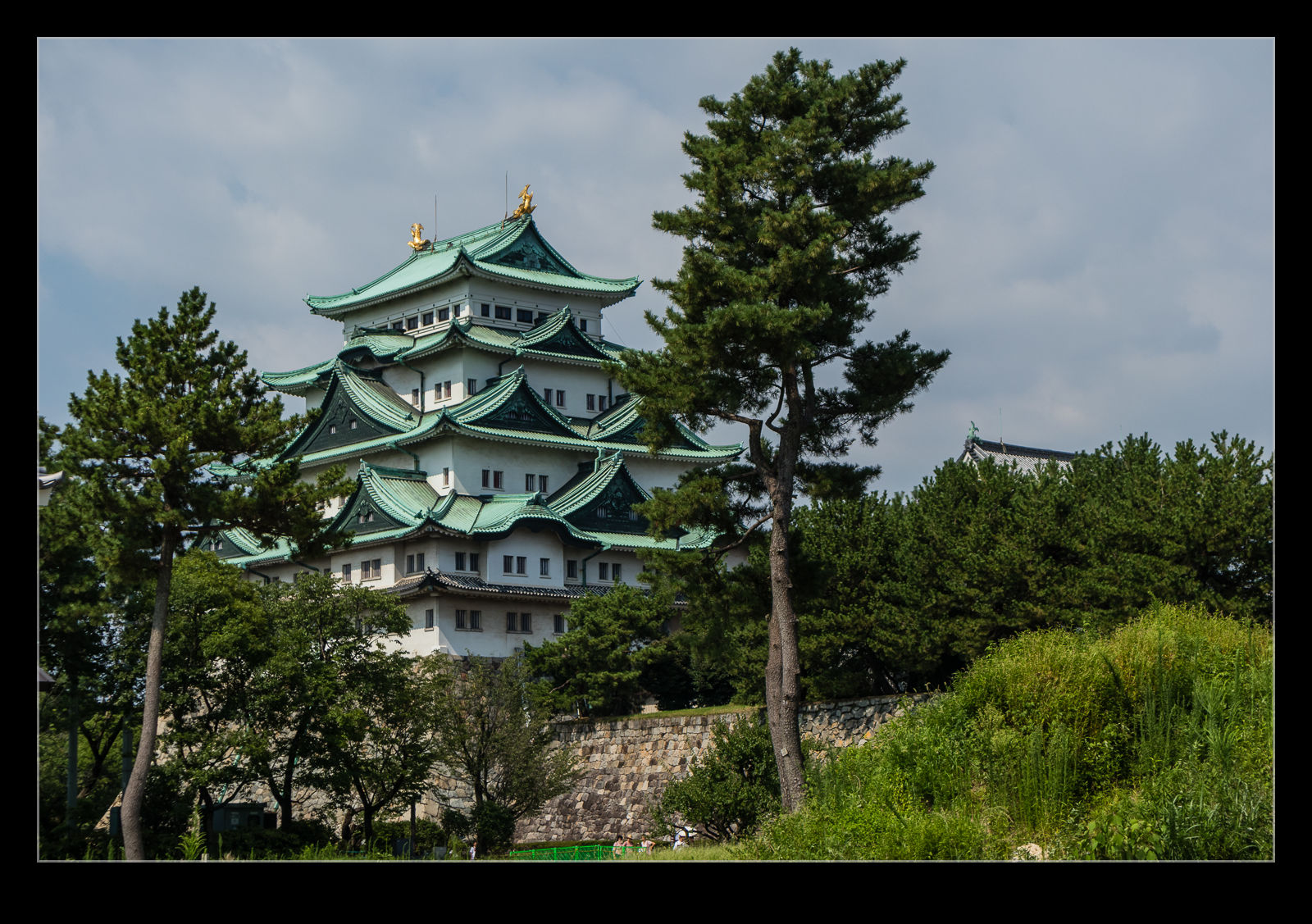 The tower is an imposing structure, even on a sunny and toasty day. I was able to walk around the perimeter of the main castle buildings in the time I had available. I had a return train booked based on when I needed to meet a colleague arriving in Tokyo that evening. Therefore, I needed to keep moving irrespective of how much I wanted to be in the shade! I had a look in some of the other buildings too. They were quite simple and elegant in their construction. I imagine that the whole thing will be most impressive when the reconstruction work is completed.
The tower is an imposing structure, even on a sunny and toasty day. I was able to walk around the perimeter of the main castle buildings in the time I had available. I had a return train booked based on when I needed to meet a colleague arriving in Tokyo that evening. Therefore, I needed to keep moving irrespective of how much I wanted to be in the shade! I had a look in some of the other buildings too. They were quite simple and elegant in their construction. I imagine that the whole thing will be most impressive when the reconstruction work is completed.
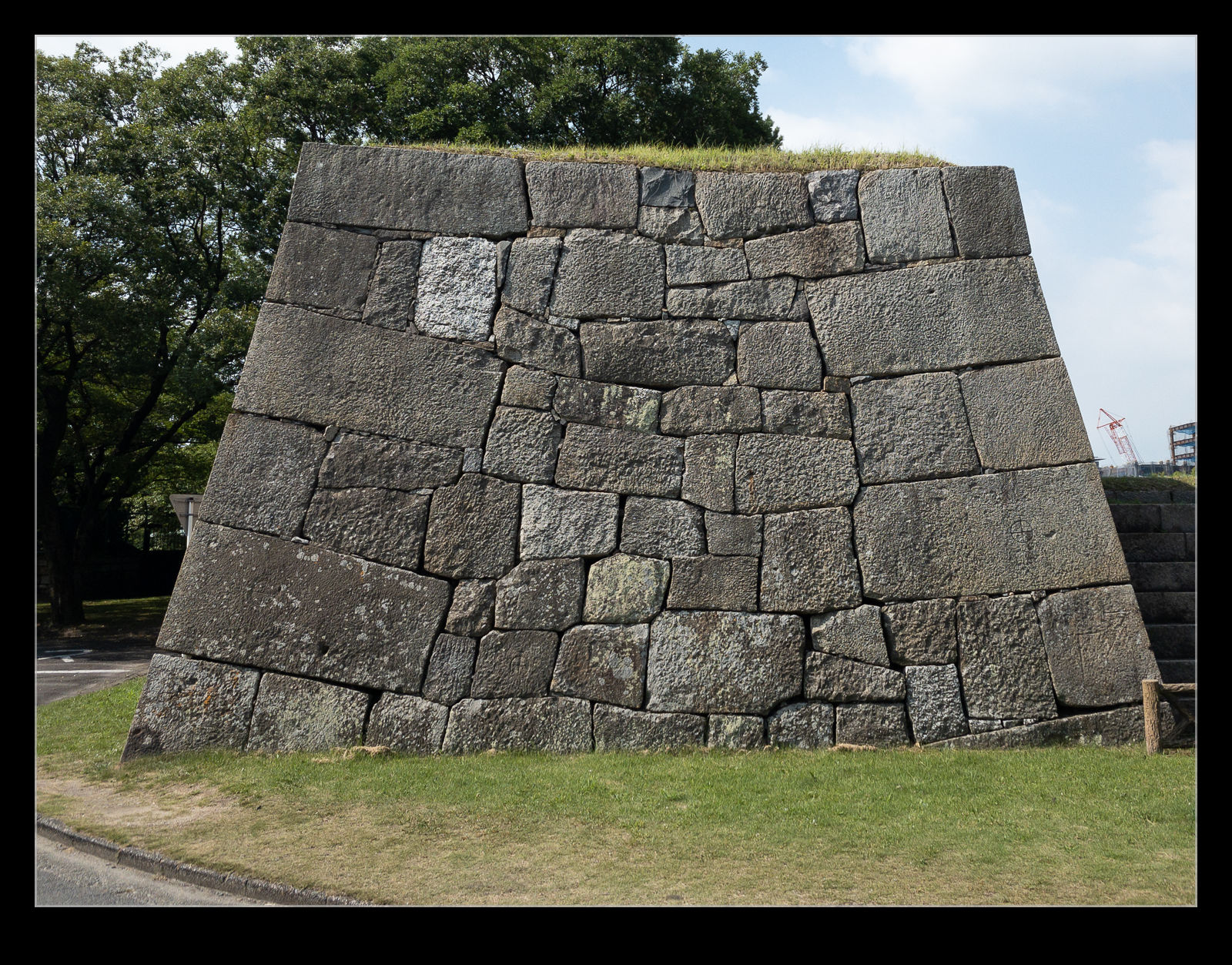 There were actors walking the grounds in costume as I moved around. They engaged freely with the visitors but I still felt a little weird photographing them as they passed me by. They clearly didn’t mind but somehow it felt like I was doing something wrong. Not sure why, to be honest. Maybe it is just the feeling that comes with being a foreigner.
There were actors walking the grounds in costume as I moved around. They engaged freely with the visitors but I still felt a little weird photographing them as they passed me by. They clearly didn’t mind but somehow it felt like I was doing something wrong. Not sure why, to be honest. Maybe it is just the feeling that comes with being a foreigner.
SC Maglev Museum
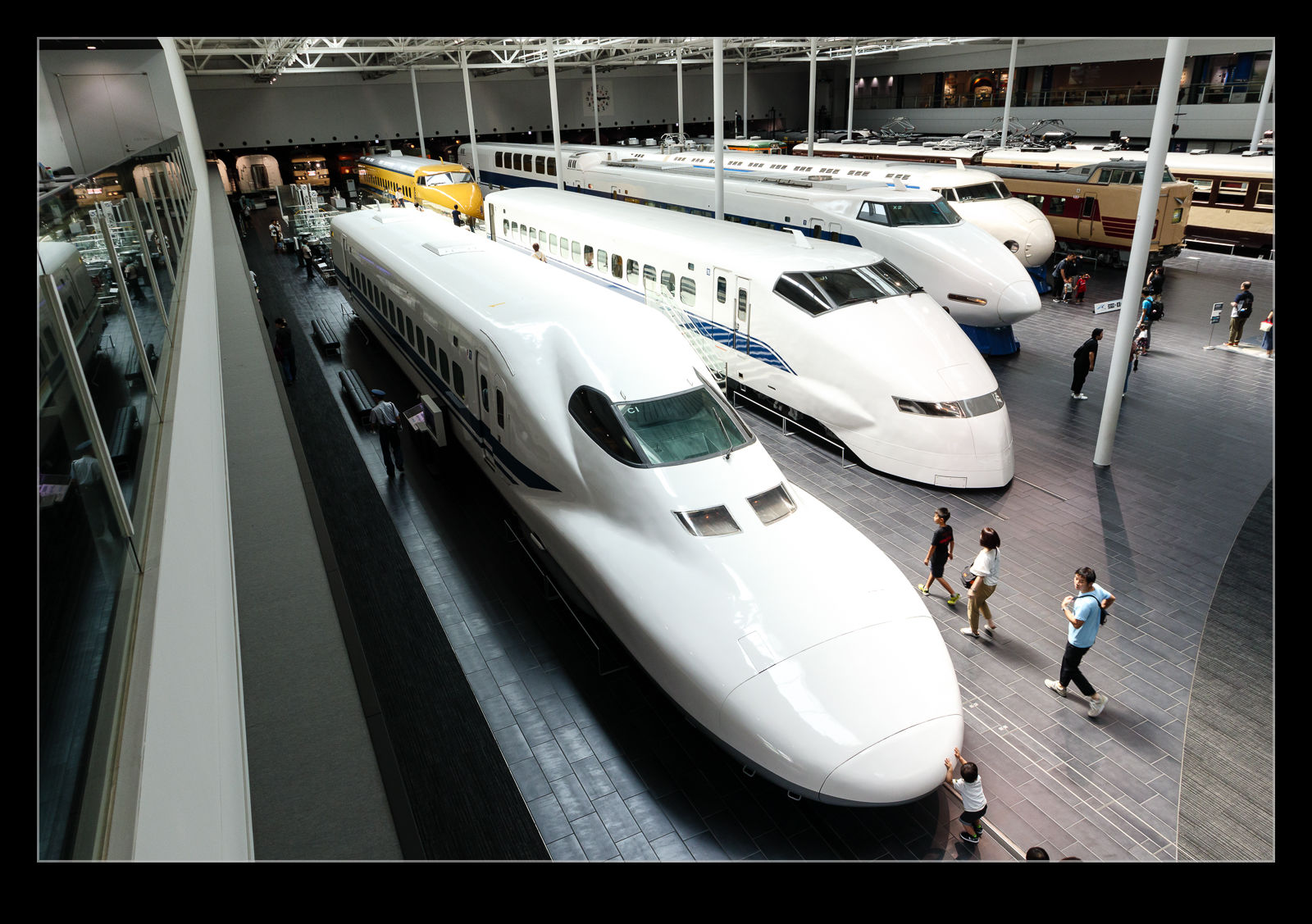 Nagoya is home to a museum of Japanese rolling stock. The museum name focuses on Maglev technology and there is a Maglev prototype in the museum. However, the exhibits are really a cross section of the Japanese rail industry over the years. I will probably post some more from the museum as there were quite a few interesting exhibits. Most of it was inside – most welcome on such a hot day – but the N700 prototype was outside. I did have a look at that briefly along with an old steam locomotive but I was soon driven back inside by the temperatures.
Nagoya is home to a museum of Japanese rolling stock. The museum name focuses on Maglev technology and there is a Maglev prototype in the museum. However, the exhibits are really a cross section of the Japanese rail industry over the years. I will probably post some more from the museum as there were quite a few interesting exhibits. Most of it was inside – most welcome on such a hot day – but the N700 prototype was outside. I did have a look at that briefly along with an old steam locomotive but I was soon driven back inside by the temperatures.
 When I first got there, you are directed into a hall with three significant exhibits. It was so dark, I was wondering whether there would be any decent photo opportunities. However, this was just the initial introduction and there were periodic videos and light shows to allow you to see these exhibits more clearly. A little patience was required. The main hall had the majority of the exhibits and they were lit normally. There were plenty of people in the museum taking pictures with small children that didn’t seem to be enjoying it as much as the parents would have liked! Maybe they wanted to be at Legoland across the street?
When I first got there, you are directed into a hall with three significant exhibits. It was so dark, I was wondering whether there would be any decent photo opportunities. However, this was just the initial introduction and there were periodic videos and light shows to allow you to see these exhibits more clearly. A little patience was required. The main hall had the majority of the exhibits and they were lit normally. There were plenty of people in the museum taking pictures with small children that didn’t seem to be enjoying it as much as the parents would have liked! Maybe they wanted to be at Legoland across the street?
